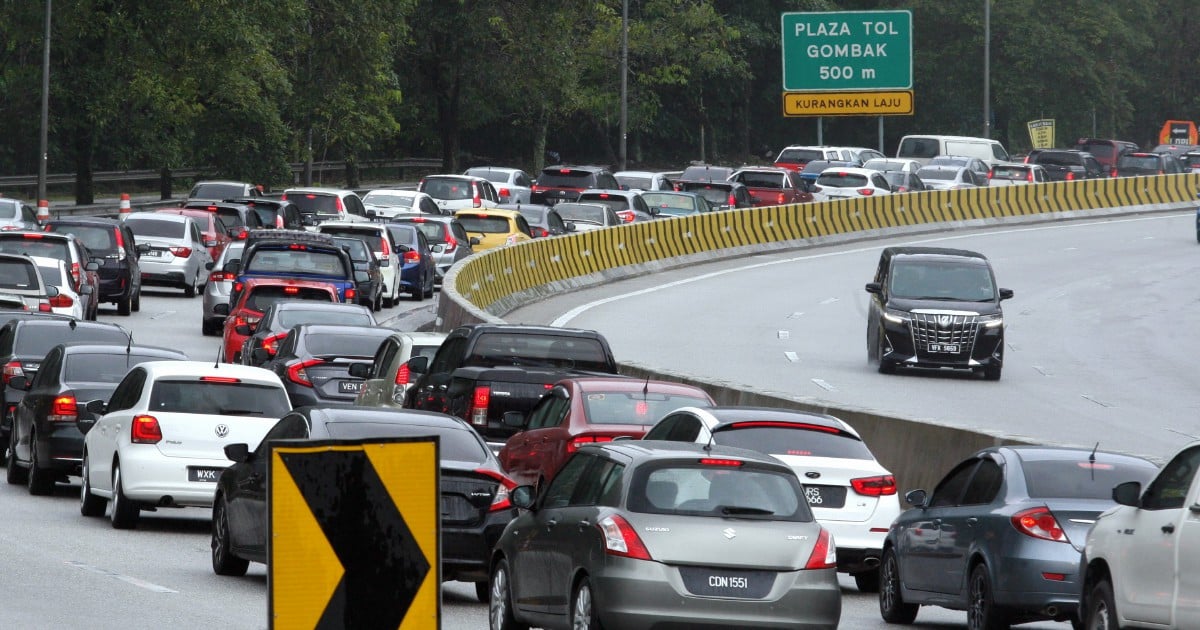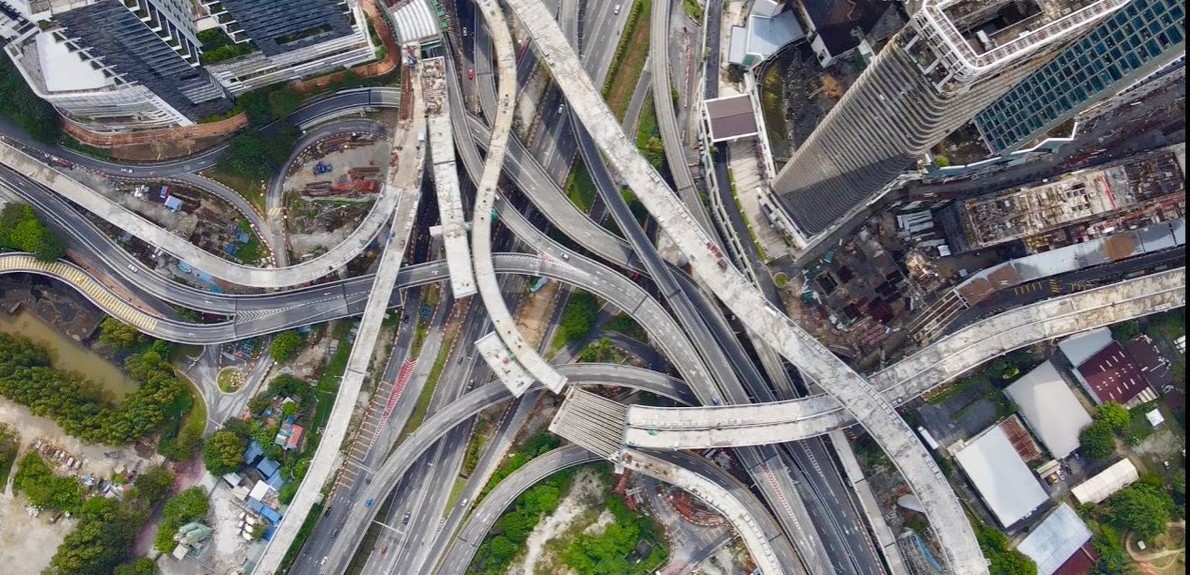When government shifts its responsibility for transportation to the private, for-profit sector, whose interests are actually being served?
After 13 years of living in the Greater KL area, I’m still amazed at times at just how many cars there are here. They say Americans have had a decades-long a love affair with the automobile — and it’s true — but these days, I think it’s safe to say Malaysians would give the Americans a run for their money. Here, it’s more of a surprise when you don’t have trouble finding a parking place or get to your destination in a short amount of time. And that’s even when it’s not pouring rain and flooding half the roads in the city.
Transportation is increasingly becoming a contentious issue in the Malaysian capital. From breakdowns and service interruptions on the various train networks to regular flash floods along major roads and soaring fares for e-hailing monolith Grab, along with the post-pandemic return of KL’s infamous traffic jams, issues with getting from point A to point B have quickly become a flash point for netizens and politicians alike.
.jpg)
Among the latest issues is the renewed talk of rubbishing or restructuring Malaysia’s petrol subsidies, which allow residents here to enjoy some of the lowest gasoline prices anywhere in the region (RON 95 and diesel, at least). Rising oil prices on the global market, however, have resulted in those fuel subsidies putting a major strain on an already-overtaxed Malaysian economy striving to rebuild after two crushing years of pandemic woes.
Targeted subsidies are one idea, basically trying to ensure only those in the lowest income brackets benefit from the initiative, but it’s unclear how such a plan would be implemented nationwide in a country with over 33 million people (all of whom, it seems, drive multiple cars at any given time).
In support of this idea, critics say the subsidies benefit the rich more than the poor. That’s all well and good, but the poor — assuming they’re largely the ones on motorbikes in the city — benefit from not paying any tolls nor, frequently, any parking charges, either. (More on these tolls to follow.)
Others have pointed out that people in the higher income brackets also pay more in taxes to the government in the first place, and thus should not be excluded from government benefits. Additionally, it’s probably safe to say there are a lot of people who are neither poor nor particularly rich (the so-called M40 group) who certainly benefit, as well. With so many viewpoints, clearly this argument is ripe for debate.
Returning to the subject of tolls, which went up dramatically nearly across the board a few years ago, the highway concessionaire model of road transportation is another contentious issue in Malaysia, and unfortunately, there’s plenty of evidence to suggest that it’s a model that ultimately does not serve the nation well.

From my perspective, it is primarily a government’s obligation to provide, manage, regulate, and oversee transportation for its citizens. Building road networks is costly, of course, and sometimes governments float bonds to finance the construction of needed roads. Sometimes tolls are levied to service the debt of those bonds, but not always, and it’s usually not an automatic solution. Motorists, for very obvious reasons, do not like toll roads.
So with that in mind, toll roads can be a supplementary solution, but usually, these pay-for-use roads – which should be the exception rather than the rule – offer a notably improved route or faster point-to-point times. In Greater KL, however, toll roads are the standard order of business and are very much the rule, not the exception. And because they are so common here, the toll highways get every bit as jammed up as the freeways. There really is questionable benefit to motorists who use these toll roads – but there is definitely a cost.
HIGHWAYS OF CASH
One major problem with this system is plain to see: There is a huge, HUGE amount of money to be made by building a highway – whether it’s needed or not – and levying tolls in a major city. The government puts out a tender for a new toll road contract, and concessionaires’ eyes quickly glaze over with dreams of Scrooge McDuck-style piles of cash. Alternatively, these concessionaires also dream up the toll road, then petition the government to let them build the thing and start raking in the money.
How much cash is potentially in play? Even as far back as 2014, the annual haul for the toll roads in existence at that time was RM5.42 billion. More recently, but still prior to the pandemic, reports indicated that the PLUS system of toll roads – that’s just one system – took in some RM11 million a day.
With this obscene level of money on the table, it’s easy to see why the mantra in Malaysia with regard to traffic engineering appears to be, “When in doubt, build another toll road.”

SOMETHING ISN’T WORKING
Building more and more roads isn’t the solution to traffic problems. It simply plunges a city into a near-perpetual state of construction without actually addressing the issue.
When it comes to toll roads, the problem is compounded because the toll plazas themselves actually create traffic jams – sometimes massive ones at peak times. So not only are you getting enmeshed in a huge crush of barely moving cars, you’re paying a fee for the joy of sitting in that jam, and you’re paying it to the very thing that caused the problem in the first place!

Anyone living in Greater KL knows that, a lot of the time, the road system just doesn’t make sense. I have read in guidebooks an assertion that, despite being a relatively compact city, because of a bewildering network of roads, toll highways, one-way streets, solid medians with no breaks, and elaborate ramps, interchanges, and U-turns, KL actually suffers the pervasive traffic problems of a much larger city. If visitors gathering information for a tourist guidebook can figure that out, it begs the question of why the pattern continues?
We’ve all had the experience of missing a turn or an off-ramp, only to be punished with an extra 15 or 20 minutes’ worth of driving for our mistake. This is why you routinely see Malaysians gingerly backing down a ramp to get back on the main road – they’ve missed their specific exit and know all too well that if they were to just continue on, there would be no nearby U-turn or easy fix, and they’d add several kilometres to their journey. To avoid that, they simply stop and inch their way back in reverse. It’s awkward, embarrassing, and potentially hazardous, but on some level, who can blame them?
HIGHWAY BLUES
The reason for all the traffic bedlam is pretty basic: Rather than tasking professional, knowledgeable city planners and traffic engineers with the job of creating (or later augmenting and/or improving) a road network that works for the residents of Greater KL, the job has been, in significant part, outsourced to a handful of for-profit concessionaires whose interest lies primarily with making money, not effectively and efficiently solving traffic problems.
Critics also maintain that the persistent spectre of corruption also clouds the issue, unfortunately, as toll road construction involves such vast amounts of money, there’s plenty to “spread around” to get permits approved and lands cleared.
At least one Member of Parliament has recently called for hearings aimed at bringing more transparency to the opaque (and potentially no-open tender) process by which concessionaires are awarded these lucrative highway contracts, as well as identifying exactly who the companies involved are, and determining through public hearings whether or not the highways are needed – or even wanted.

In my own neighbourhood, the monstrous, and still-under-construction DASH (Damansara-Shah Alam) toll highway has all but destroyed the landscape and character of the tiny little township, with the hulking six-lane elevated highway passing as close as 30 metres to several blocks of condos. Additionally, the vast highway’s deck has cast much of the neighbourhood into permanent shadow now, too. Residents organised and fervently protested the highway’s construction consistently for two years before it began, but in the end, nothing mattered.
Though I have not personally seen any hard evidence, people in the neighbourhood remain convinced that the only way any governing council would have allowed such a monstrous (and frankly unnecessary) highway construction project to be carried out in such a small residential area likely involved some “under-the-table” tokens of gratitude.
The issue of corruption in the construction industry writ large is another discussion entirely, but it’s safe to say that the problem of graft all but certainly impacts the road construction industry in Malaysia to the detriment of its residents and road users.

Unfortunately, short of scraping Kuala Lumpur clean off the map and starting all over from scratch, there’s no easy solution to the existing problem. However, that doesn’t mean it needs to be perpetually compounded, and it doesn’t mean that smarter decisions can’t be made going forward. When are there going to be enough toll highways? When will they stop building them? And most importantly, who do all these toll roads really benefit in the first place?
"ExpatGo welcomes and encourages comments, input, and divergent opinions. However, we kindly request that you use suitable language in your comments, and refrain from any sort of personal attack, hate speech, or disparaging rhetoric. Comments not in line with this are subject to removal from the site. "





















